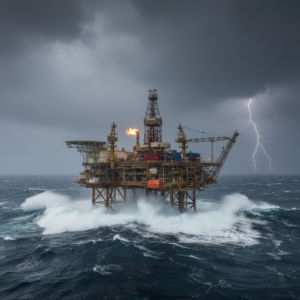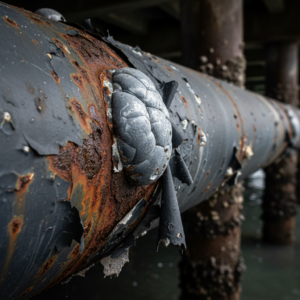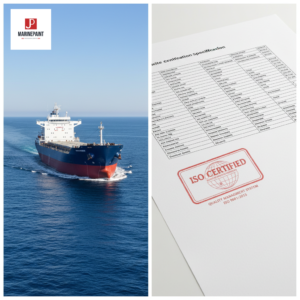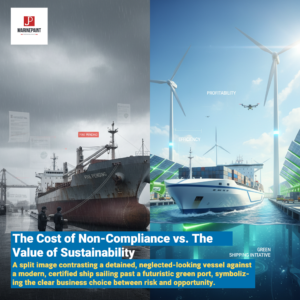Your vessel is a significant investment, constantly battling corrosive saltwater and harsh elements. This relentless assault can lead to costly repairs and diminish its value, causing endless worry for any owner.
Epoxy marine paint is a high-performance, two-part protective coating engineered to provide a formidable barrier against the harshest marine conditions. It consists of an epoxy resin and a curing agent (hardener) that, when mixed, undergo a chemical reaction to form a tough, durable, and highly adhesive plastic-like coating. This system creates a non-porous shield that is exceptionally resistant to water, chemicals, and abrasion, making it the ultimate defender for hulls, decks, and even internal spaces like potable water tanks coatings. Unlike standard paints, marine-grade epoxy offers superior longevity and protection, preventing critical issues like corrosion on steel hulls and osmotic blistering on fiberglass. This comprehensive guide will explore the science behind its strength, its myriad benefits, the different types available, and proper application, ensuring you have the knowledge to keep your vessel in pristine condition for years to come.
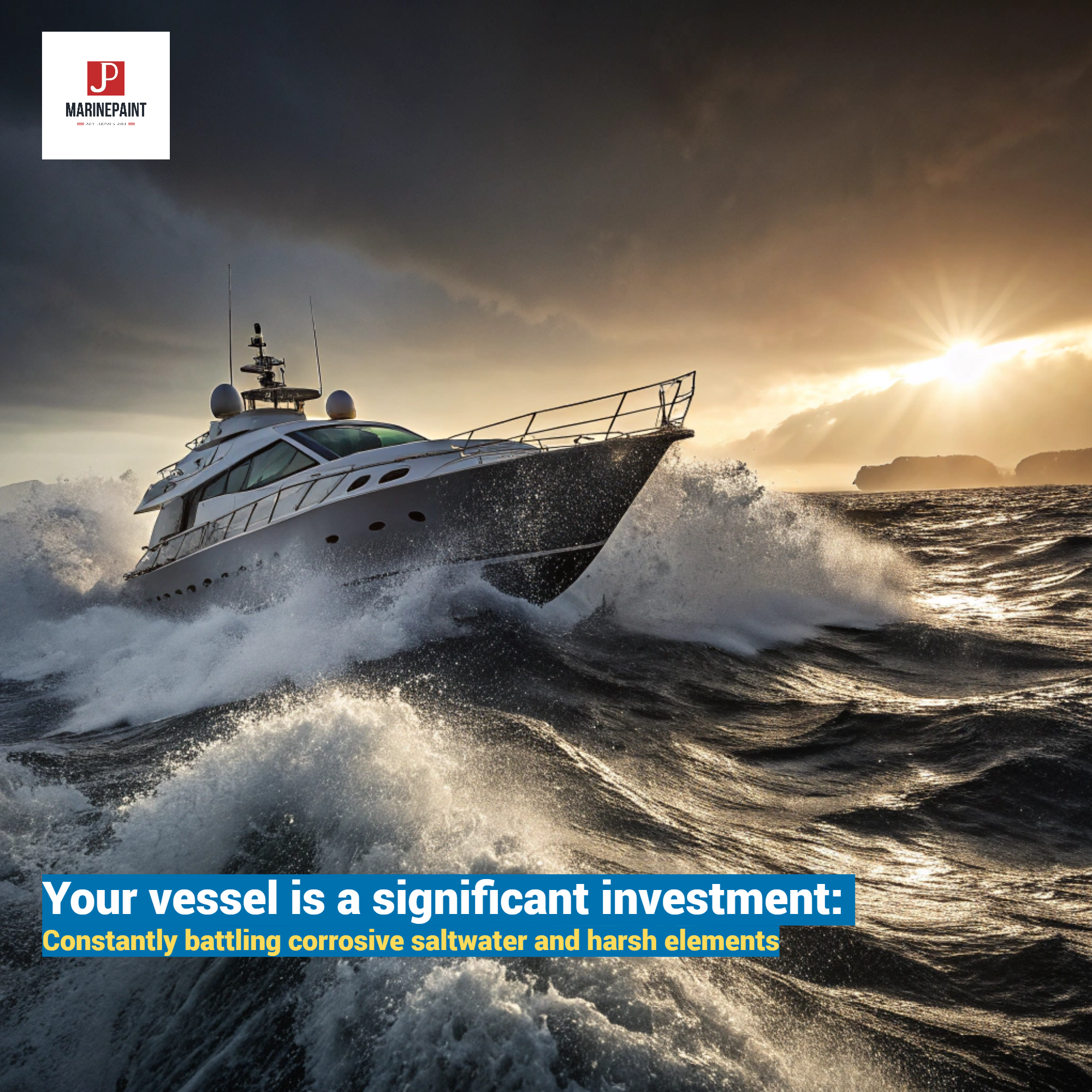
Choosing the right protection for your boat isn't just about aesthetics; it's about preserving its structural integrity and ensuring its longevity. As we delve deeper, you'll understand why epoxy marine paint is trusted by professionals worldwide as the first line of defense against the unforgiving sea.
What is Epoxy Marine Paint? A Deep Dive into its Composition and Properties?
Heard about the legendary toughness of marine epoxy but unsure what makes it so superior to other boat paints? Using a less robust paint can lead to premature failure, peeling, and blistering, forcing you into a cycle of frequent and expensive repainting projects. To make an informed decision, you must understand the science that gives epoxy its unyielding strength and the key properties that set it apart. This knowledge is your first step toward providing your vessel with the durable, long-lasting protection it truly deserves.
The incredible strength of epoxy marine paint lies in its two-part system . The first part is the epoxy resin, which contains epoxide groups, and the second is a hardener (or curing agent), often a polyamine compound . When these two components are mixed in a precise ratio, they trigger a chemical reaction called polymerization. This process creates a cross-linked polymer structure that is incredibly strong, dense, and stable. This resulting film is not just a layer of paint; it's a chemically-cured, plastic-like shield that bonds tenaciously to the substrate. This chemical bond is far superior to the mechanical adhesion of single-part paints, which simply dry through solvent evaporation. The cross-linking is what gives the coating its exceptional durability and resistance to water, chemicals, and physical impact, forming a true protective barrier.
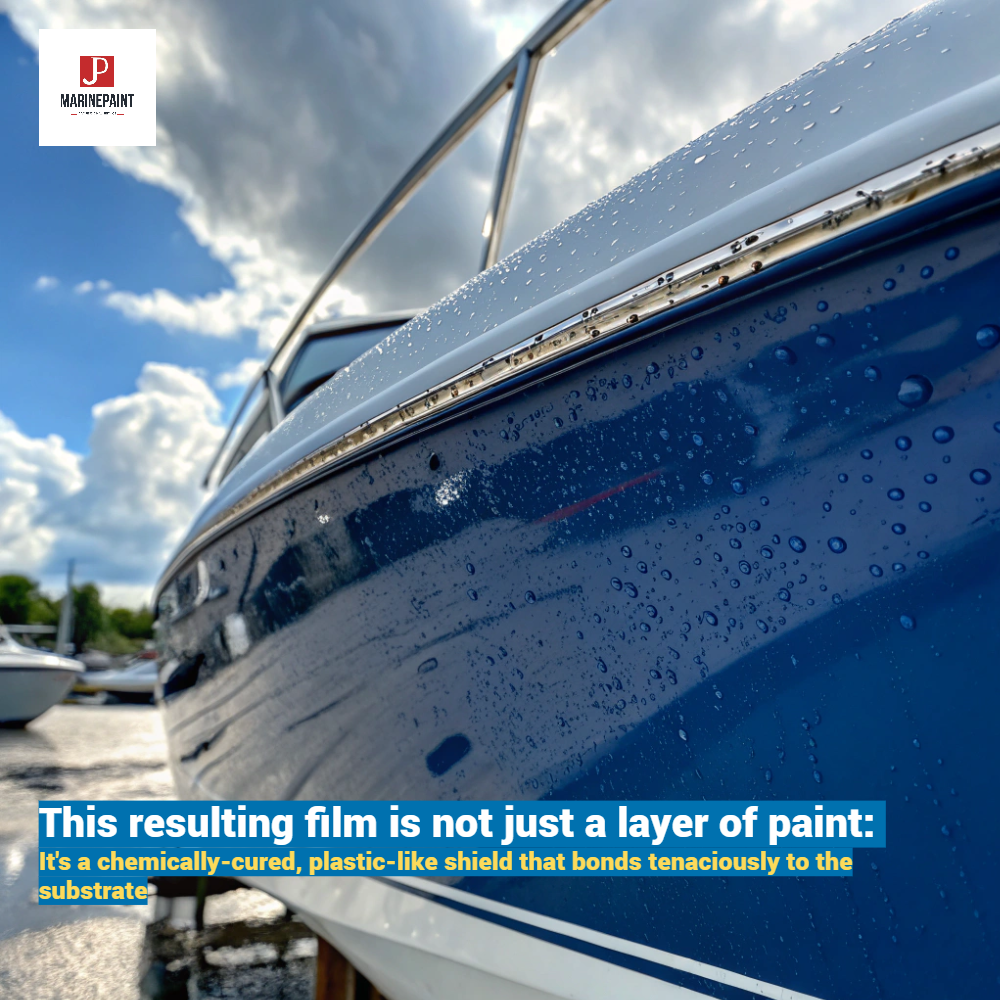
The Science Behind the Strength: Two-Part Epoxy System
The magic of epoxy paint happens at a molecular level. Before application, the resin and hardener exist as separate, relatively low-molecular-weight liquids . When mixed, the hardener's reactive sites open the epoxide rings on the resin molecules, linking them together into a vast, three-dimensional network. This process, known as curing, transforms the liquid paint into a hard, thermoset plastic that will not re-melt. The curing time can vary depending on the formulation and ambient temperature, a critical factor to consider during application. At JDmarine Paint, products like our JDH835 Aluminum Iron Epoxy Anti-Rust Paint are engineered with specific curing agents to optimize this reaction, ensuring a tough, protective film with excellent anti-corrosion properties .
Key Properties of High-Quality Epoxy Marine Paint
Not all epoxies are created equal. High-quality formulations, like those we develop at JDmarine, are distinguished by a specific set of performance characteristics essential for marine protection.
| Property | Description | Why It Matters for Your Vessel |
|---|---|---|
| Exceptional Durability & Abrasion Resistance | The cross-linked polymer structure creates a hard, tough surface that resists scratches, impact, and general wear and tear 6. | Protects the hull and high-traffic deck areas from damage caused by mooring, docking, anchors, and daily use. |
| Superior Water & Moisture Resistance | The dense, non-porous film acts as an impenetrable barrier, preventing water molecules from reaching the substrate. | This is the primary defense against corrosion on metal hulls and prevents water absorption that leads to osmotic blistering in fiberglass boats. |
| Excellent Adhesion to Various Substrates | Epoxy's chemical bonding process allows it to adhere tenaciously to properly prepared fiberglass, wood, aluminum, and steel . | A strong bond prevents peeling, flaking, and chipping, ensuring the protective layer remains intact even under stress. |
| High Resistance to Chemicals, Oils, and Fuels | The stable chemical structure of cured epoxy is inert to many common contaminants found in the marine environment, including fuel, oil, and cleaning agents. | Protects surfaces in the bilge, engine room, and on deck from degradation caused by spills and exposure. |
Understanding these properties is crucial. They are the reason epoxy paint provides such robust and long-lasting protection, making it a wise investment for any serious boat owner.
The Indisputable Benefits of Using Epoxy Marine Paint for Your Boat?
Your boat is under constant attack. Saltwater relentlessly tries to corrode its metal components, while water absorption threatens to cause ugly and damaging blisters on its fiberglass hull. Neglecting these threats can lead to severe structural issues, spiraling repair costs, and a significant drop in your vessel's value. The solution is to apply a coating that does more than just add color; you need a multifunctional shield that offers comprehensive protection against every marine threat.
Using a high-quality epoxy marine paint provides a cascade of benefits that go far beyond a simple paint job. It is the single most effective way to safeguard your vessel's integrity and appearance. From forming an ironclad barrier against corrosion and osmosis to delivering a stunning, long-lasting finish, epoxy paint is a versatile workhorse. Its application extends from the boat bottom paint on the hull to protective coatings on decks and in bilges, offering a complete solution for boat maintenance. This multifaceted protection ensures peace of mind and preserves the value of your maritime asset for the long haul.
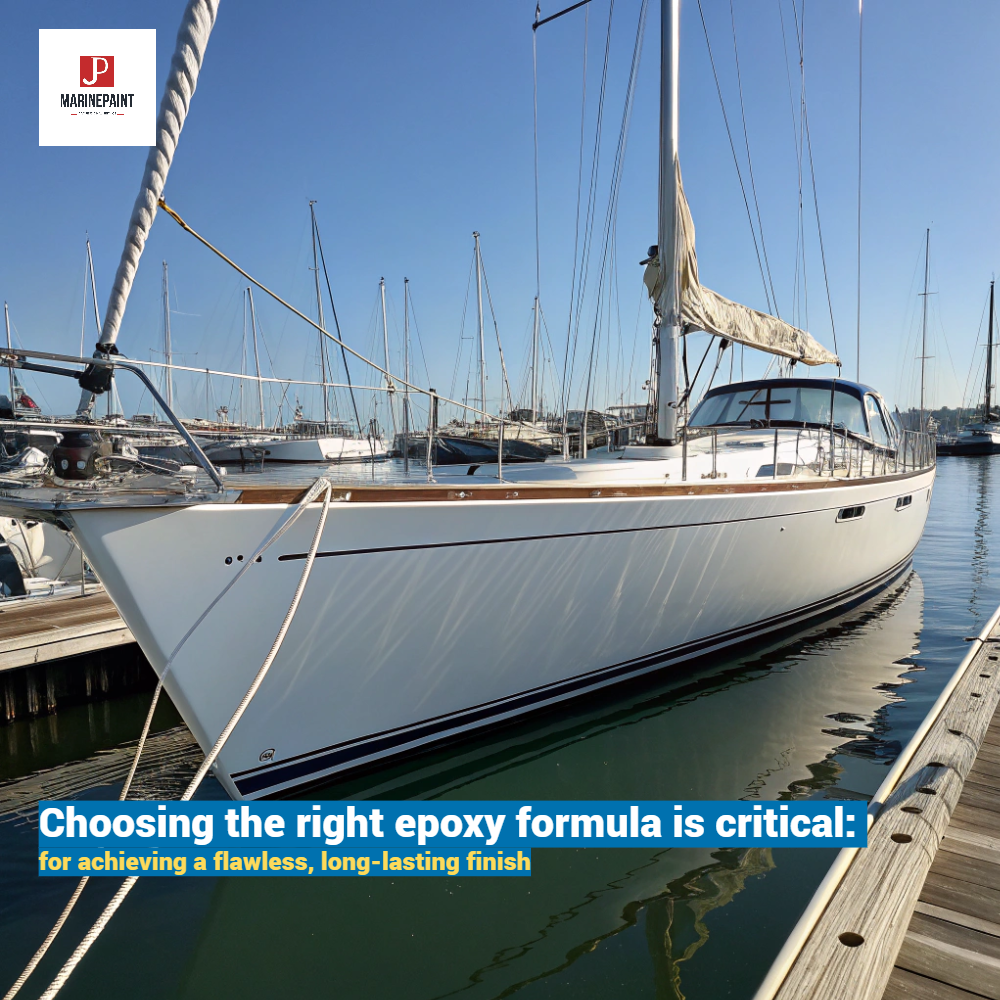
Ultimate Corrosion Protection with Epoxy Marine Coatings
For vessels with steel or aluminum hulls, corrosion is the number one enemy. Saltwater is a powerful electrolyte that accelerates the rusting process, and even small scratches in a lesser coating can become major problems. Epoxy marine paint, especially a high-solids formula like JDH815 Iron Oxide Red Epoxy Primer, acts as a complete barrier coat 9. Its tightly packed molecular structure prevents moisture and salt from ever reaching the metal substrate 6. Furthermore, specialized primers like our JDH819 Epoxy Zinc Phosphate Primer contain active anti-corrosive pigments that provide additional chemical inhibition, sacrificing themselves to protect the steel 318. This dual-action approach—a physical barrier combined with chemical defense—offers the ultimate corrosion protection available.
Preventing Osmotic Blistering with an Epoxy Barrier Coat
Fiberglass hulls, while not susceptible to rust, face their own unique challenge: osmotic blistering. The gelcoat on a fiberglass boat is not completely waterproof; over time, water can slowly seep through it into the fiberglass laminate. This trapped water can react with chemicals in the resin, forming acidic solutions that draw in more water through osmosis, creating pressure that results in blisters. Applying several coats of a marine-grade epoxy primer creates an impermeable barrier that stops this water ingress in its tracks. This is considered an essential preventative measure for any new boat and a critical step in any quality fiberglass boat maintenance routine.
Long-Lasting, High-Gloss Finish for Lasting Appeal
Beyond its protective qualities, epoxy marine paint systems deliver an exceptional aesthetic finish. When paired with a quality polyurethane topcoat like our JD908 Acrylic Polyurethane Topcoat, the result is a deep, high-gloss finish that is both beautiful and incredibly durable 216. This finish resists fading from UV exposure far better than traditional paints and is much easier to clean. Its hardness helps it resist scratches and scuffs, keeping your boat looking like new for seasons to come. This combination of beauty and brawn ensures your vessel not only performs well but also turns heads at the dock.
Types of Epoxy Marine Paint: Choosing the Right Formula for the Job?
Walking into a marine supply store, you're faced with a wall of paint cans, all labeled "epoxy." But are they all the same? Using a topcoat where a primer is needed, or a general-purpose epoxy in a specialized area like a drinking water tank, is a recipe for disaster. This can lead to catastrophic coating failure, wasted time and money, and even potential safety hazards. To ensure a successful and safe boat painting project, you must learn to distinguish between the different types of epoxy marine paint and understand the specific role each one is designed to play.
Choosing the right epoxy formula is critical for achieving a flawless, long-lasting finish. Marine epoxy systems are generally broken down into three main categories: primers, which form the adhesive foundation; topcoats, which provide the primary protective and aesthetic shield; and specialized formulations designed for specific, demanding applications. This includes high-build epoxies for leveling surfaces, antifouling paints for underwater protection, and crucially, certified potable water tanks coatings that are safe for storing drinking water. Understanding these distinctions will empower you to select the perfect products for every part of your vessel, from the keel to the mast.
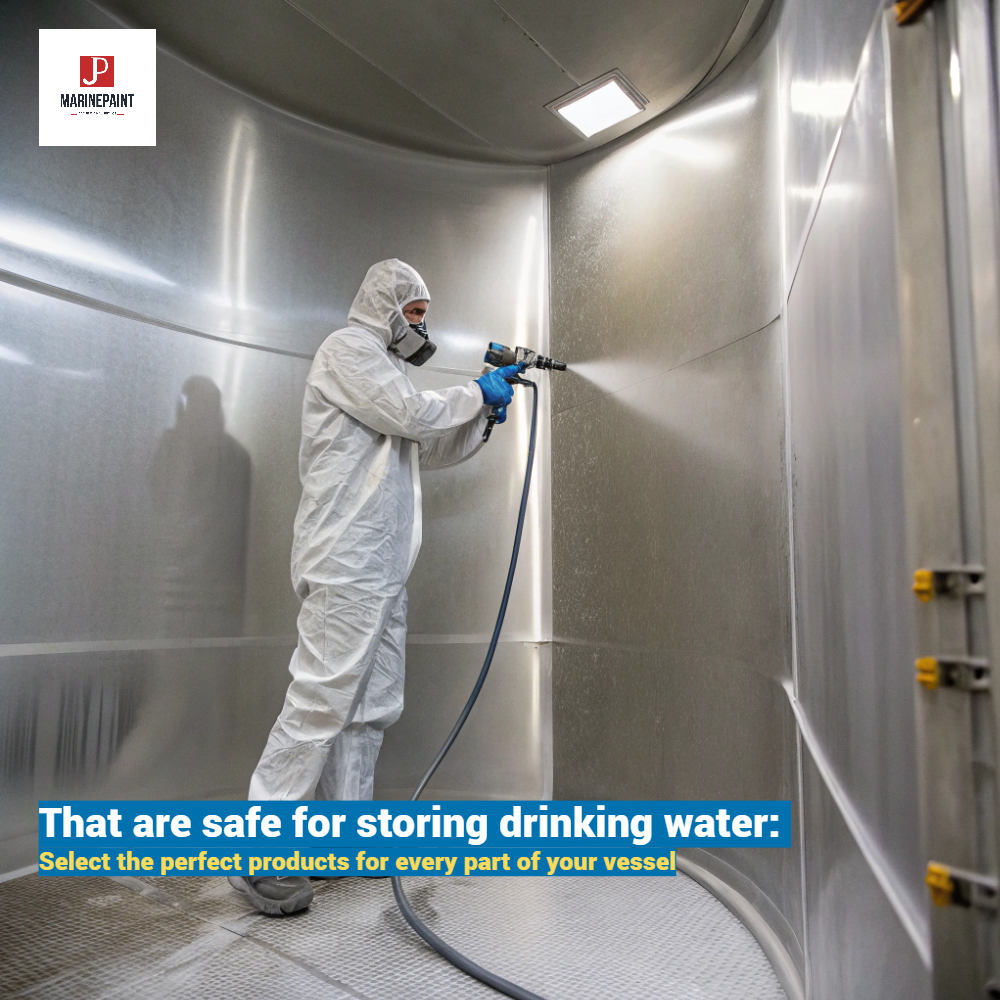
Epoxy Marine Primers: The Foundation for a Flawless Finish
Think of an epoxy primer as the essential handshake between the boat's surface and the subsequent paint layers. Its primary function is to create a tenacious bond to the substrate—be it bare fiberglass, wood, or metal—and provide a perfectly prepared surface for the topcoat to adhere to 6. Primers are formulated with excellent wetting properties to penetrate and seal the substrate, while also providing the initial layer of corrosion and water resistance.
Using a dedicated primer is non-negotiable on bare substrates or when painting over old, unknown coatings. For example, our JDH818 Rough Surface Epoxy Primer is specifically designed to adhere to surfaces with less-than-perfect preparation 326. For tying together different layers of paint, a product like JDH263 Epoxy Tie Coat is used to ensure compatibility between an epoxy base and a different type of topcoat 318.
Specialized Epoxy Formulations
Beyond general-purpose primers and topcoats, the world of epoxy includes highly specialized formulas engineered for unique challenges.
-
Potable Water Tanks Coatings: This is one of the most critical specialized applications. Standard epoxies can leach harmful chemicals into drinking water. Therefore, tanks for potable water require a certified, non-toxic, solvent-free coating. Our JDH912 Epoxy Potable Water Tank Coating is a two-component, solvent-free polyamine cured epoxy designed specifically for this purpose 523. It cures to a hard, glossy, and non-porous finish that will not contaminate the water, ensuring the safety of everyone on board. It is suitable for properly prepared carbon steel, stainless steel, and concrete substrates 23. When working with any paint, but especially in enclosed spaces like tanks, understanding the importance of personal protective equipment is paramount for your health and safety 20.
-
Underwater and Antifouling Epoxy Paints: While epoxy itself provides an excellent waterproof barrier, it doesn't stop marine growth. That's why for below-the-waterline applications, it's often used as the barrier coat system underneath an antifouling paint. Some advanced systems, like our JD753 Tin-free self-polishing antifouling paint, are designed to be compatible with epoxy primers to provide long-lasting protection against barnacles, algae, and other organisms 513.
-
High-Build Epoxy Paints: These are formulas with a very high percentage of solids, allowing you to apply a very thick layer in a single coat 1. They are perfect for filling in minor imperfections on a surface to create a smooth, level profile before applying the final topcoat. They are also used in areas requiring maximum protection, where building up a thick, durable barrier is the primary goal.
Water-Based vs. Solvent-Based Epoxy Marine Paints
Traditionally, marine epoxies have been solvent-based, relying on organic solvents to achieve the right viscosity for application. These offer proven, high-level performance. However, with increasing environmental regulations and a focus on safety, water-based epoxies are gaining popularity. They use water as the primary solvent, resulting in lower VOC (Volatile Organic Compound) emissions and much easier cleanup with just soap and water 1. While early water-based versions couldn't match the durability of their solvent-based counterparts, modern formulations from companies like JDmarine offer impressive performance, making them a viable and more environmentally friendly option for many applications.
Conclusion
Epoxy marine paint stands as the ultimate guardian for your vessel, offering unparalleled protection, durability, and a flawless finish that other coatings simply cannot match.
![]()

